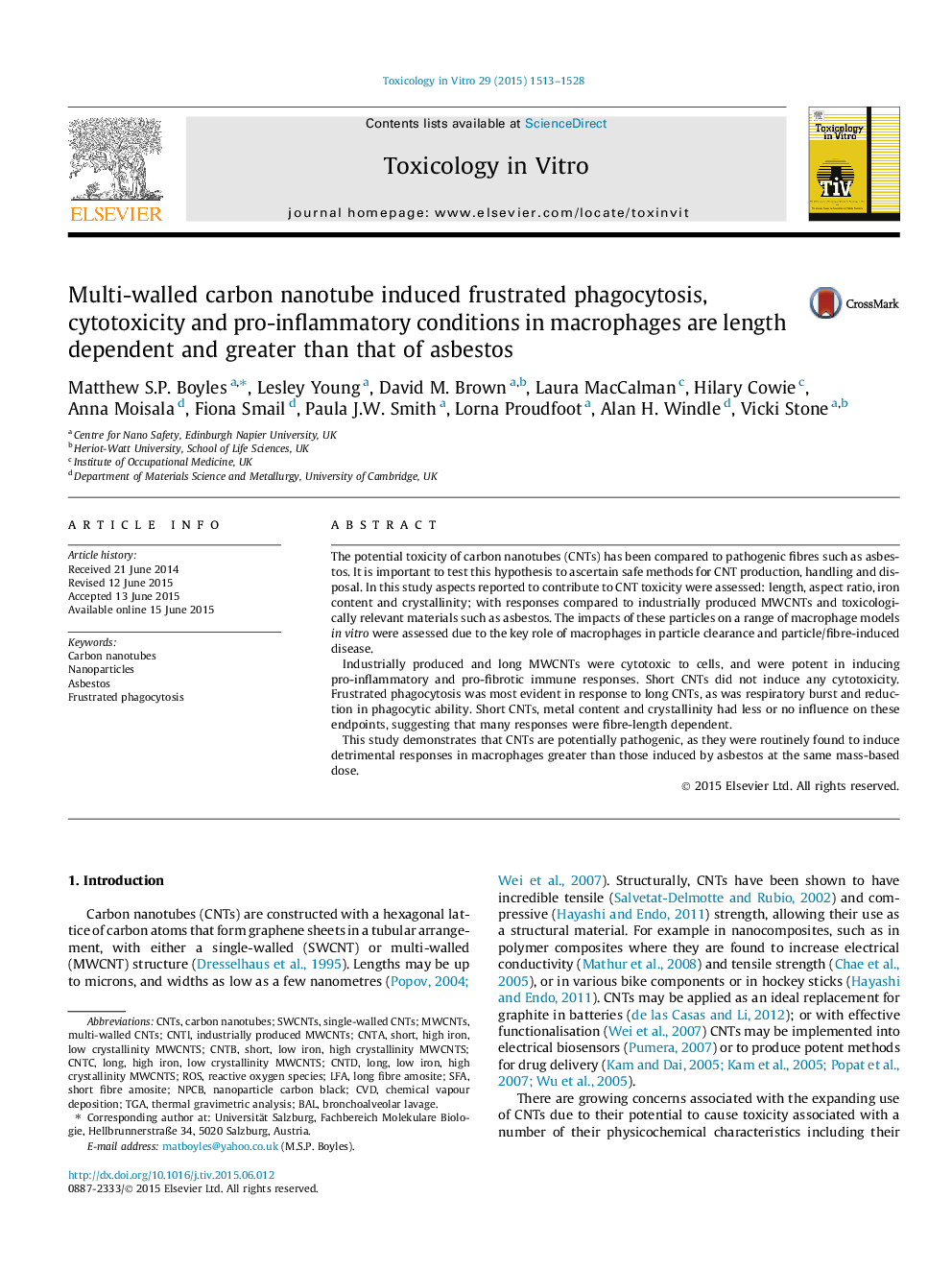| Article ID | Journal | Published Year | Pages | File Type |
|---|---|---|---|---|
| 5861377 | Toxicology in Vitro | 2015 | 16 Pages |
â¢MWCNTs were synthesised with specific physicochemical characteristics.â¢Particle characteristics known to induce respiratory disease were assessed: length, iron content, crystallinity.â¢MWCNT length was found to be a driving force in biological responses.â¢Iron and crystal structure had less influence in biological responses.â¢MWCNTs induced greater detrimental biological responses compared to asbestos.
The potential toxicity of carbon nanotubes (CNTs) has been compared to pathogenic fibres such as asbestos. It is important to test this hypothesis to ascertain safe methods for CNT production, handling and disposal. In this study aspects reported to contribute to CNT toxicity were assessed: length, aspect ratio, iron content and crystallinity; with responses compared to industrially produced MWCNTs and toxicologically relevant materials such as asbestos. The impacts of these particles on a range of macrophage models in vitro were assessed due to the key role of macrophages in particle clearance and particle/fibre-induced disease.Industrially produced and long MWCNTs were cytotoxic to cells, and were potent in inducing pro-inflammatory and pro-fibrotic immune responses. Short CNTs did not induce any cytotoxicity. Frustrated phagocytosis was most evident in response to long CNTs, as was respiratory burst and reduction in phagocytic ability. Short CNTs, metal content and crystallinity had less or no influence on these endpoints, suggesting that many responses were fibre-length dependent.This study demonstrates that CNTs are potentially pathogenic, as they were routinely found to induce detrimental responses in macrophages greater than those induced by asbestos at the same mass-based dose.
